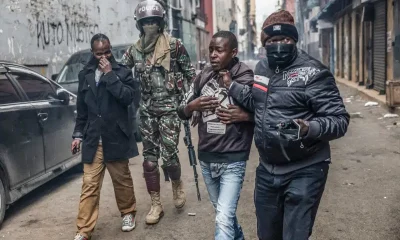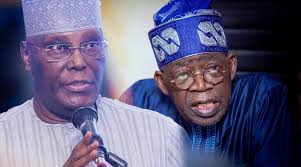
Foreign
Kenya In Turmoil As Deadly Protests Shake Ruto’s Government

(iexclusivenews) – The recent wave of anti-government protests in Kenya has thrust the East African nation into a state of political and social turmoil.
What began as demonstrations against proposed tax hikes has evolved into a broader movement calling for systemic change and the resignation of President William Ruto.

Let’s delve into the complex factors fueling the unrest and its far-reaching consequences.
The Spark That Ignited a Nation
In June 2024, Kenya witnessed the outbreak of youth-led protests in response to proposed tax increases.
Despite President Ruto’s subsequent withdrawal of the controversial legislation and a cabinet reshuffle, the demonstrations have persisted and intensified.

Activists now demand more than just economic relief; they are calling for a complete overhaul of the political system to address deep-rooted issues of corruption and poor governance.
A Deadly Turn of Events
As the protests continue, the human cost has become increasingly apparent.
The government-funded Kenya National Commission on Human Rights (KNCHR) reports that at least 50 people have lost their lives in the unrest to date.
The most recent demonstrations have seen violent clashes between protesters and law enforcement, with at least one fatality reported in Kitengela, a town on the outskirts of Nairobi.
READ MORE: Kenya Erupts Again As Mass Protests Challenge Ruto’s Presidency
Kenya Protest: President Bows to Pressure Withdraws Finance Bill
Kenya Erupts: 13 Dead as Anti-Tax Protests Turn Violent
Police Response and Human Rights Concerns
The police response to the protests has drawn criticism from human rights advocates.
Reports of excessive force, arbitrary detentions, and even abductions have raised serious concerns about the state of civil liberties in Kenya.
The KNCHR has documented hundreds of injuries and detentions related to the protests, highlighting the urgent need for accountability and reform within the security forces.
Economic Pressures and International Influence
At the heart of the crisis lies Kenya’s precarious economic situation.
With over 30% of the country’s revenue dedicated to servicing debt interest, President Ruto faces the challenging task of balancing fiscal responsibility with the needs of a population struggling with rising living costs.
The International Monetary Fund (IMF) has become a focal point of criticism, with protesters accusing the organization of pushing for unpopular austerity measures.
Political Fallout and Government Response
The ongoing unrest represents the most significant challenge to President Ruto’s administration since he assumed office two years ago.
While the government has proposed “multi-sectoral” talks to address grievances, many leading activists have rejected these overtures, demanding immediate action on key issues such as corruption.
The resignation of the national police chief, a key demand of the protesters, has done little to quell the growing dissatisfaction.
International Implications and Accusations
The crisis has taken on an international dimension, with President Ruto accusing the Ford Foundation, an American philanthropic organization, of sponsoring violence and mayhem in Kenya.
The foundation has vehemently denied these allegations, emphasizing its non-partisan approach to grant-making.
This development underscores the complex interplay of domestic and international factors in the ongoing crisis.
Looking Ahead of Kenya’s Uncertain Future
As Kenya grapples with this period of intense social and political upheaval, the path forward remains uncertain.
The government’s ability to address the protesters’ demands while maintaining economic stability will be crucial in determining the country’s trajectory.
For now, the world watches as one of East Africa’s most influential nations navigates through troubled waters, seeking a balance between change and stability.


























